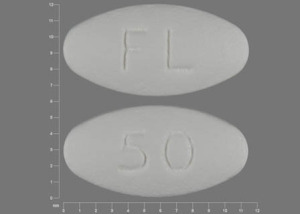Savella Interactions
There are 383 drugs known to interact with Savella (milnacipran), along with 9 disease interactions, and 2 alcohol/food interactions. Of the total drug interactions, 97 are major, 285 are moderate, and 1 is minor.
- View all 383 medications that may interact with Savella
- View Savella alcohol/food interactions (2)
- View Savella disease interactions (9)
Most frequently checked interactions
View interaction reports for Savella (milnacipran) and the medicines listed below.
- albuterol
- amitriptyline
- baclofen
- clonazepam
- cyclobenzaprine
- Cymbalta (duloxetine)
- Flexeril (cyclobenzaprine)
- folic acid
- gabapentin
- hydroxyzine
- levothyroxine
- lisinopril
- Lyrica (pregabalin)
- meloxicam
- metformin
- Norco (acetaminophen / hydrocodone)
- omeprazole
- oxycodone
- pantoprazole
- prednisone
- Singulair (montelukast)
- Synthroid (levothyroxine)
- tizanidine
- Topamax (topiramate)
- topiramate
- tramadol
- trazodone
- Vitamin B12 (cyanocobalamin)
- Vitamin D3 (cholecalciferol)
- Xanax (alprazolam)
Savella alcohol/food interactions
There are 2 alcohol/food interactions with Savella (milnacipran).
Savella disease interactions
There are 9 disease interactions with Savella (milnacipran) which include:
- liver disease
- depression
- renal disease
- glaucoma
- hypertension
- hyponatremia
- mania
- seizures
- urinary tract obstruction
More about Savella (milnacipran)
- Savella consumer information
- Compare alternatives
- Pricing & coupons
- Reviews (347)
- Drug images
- Side effects
- Dosage information
- During pregnancy
- Generic availability
- FDA approval history
- Drug class: serotonin-norepinephrine reuptake inhibitors
- Breastfeeding
- En español
Related treatment guides
Drug Interaction Classification
| Highly clinically significant. Avoid combinations; the risk of the interaction outweighs the benefit. | |
| Moderately clinically significant. Usually avoid combinations; use it only under special circumstances. | |
| Minimally clinically significant. Minimize risk; assess risk and consider an alternative drug, take steps to circumvent the interaction risk and/or institute a monitoring plan. | |
| No interaction information available. |
Further information
Always consult your healthcare provider to ensure the information displayed on this page applies to your personal circumstances.


